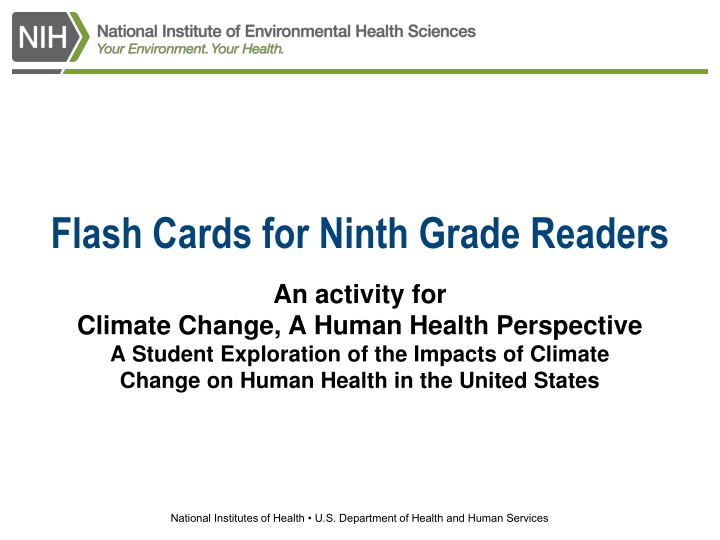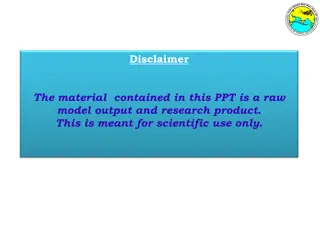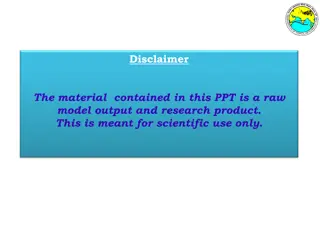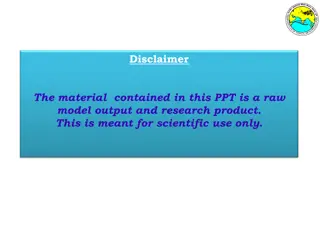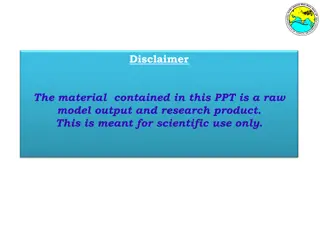Flash Cards for Ninth Grade Readers
Climate change is projected to lead to thousands of additional premature deaths per year in the United States by the end of the century. Changes in extreme heat and cold, impacts on air quality, and more frequent and intense extreme events pose significant risks to human health. These include respiratory and cardiovascular illnesses, allergies, and disruptions to critical infrastructure vital for emergency response. Urgent action is needed to address the health consequences of climate change.
Download Presentation

Please find below an Image/Link to download the presentation.
The content on the website is provided AS IS for your information and personal use only. It may not be sold, licensed, or shared on other websites without obtaining consent from the author.If you encounter any issues during the download, it is possible that the publisher has removed the file from their server.
You are allowed to download the files provided on this website for personal or commercial use, subject to the condition that they are used lawfully. All files are the property of their respective owners.
The content on the website is provided AS IS for your information and personal use only. It may not be sold, licensed, or shared on other websites without obtaining consent from the author.
E N D
Presentation Transcript
Flash Cards for Ninth Grade Readers An activity for Climate Change, A Human Health Perspective A Student Exploration of the Impacts of Climate Change on Human Health in the United States National Institutes of Health U.S. Department of Health and Human Services
How Climate Change Affects Health Key Findings from the 2016 Climate Change and Health Assessment Chapter 2 | Changes in Extreme Heat and Extreme Cold A warmer future is projected to lead to on the order of thousands to tens of thousands of additional premature deaths per year across the United States by the end of this century from heat. Any reduction in cold-related deaths is projected to be smaller than the increase in heat-related deaths in most regions. High temperatures can also lead to a wide range of illnesses. Examples of illnesses associated with extreme heat include cardiovascular (heart and blood vessels), respiratory (lung), and renal (kidney) illnesses; diabetes; hyperthermia (elevated body temperature); mental health issues; and preterm births. Even small differences from seasonal average temperatures result in illness and death. An increased risk for respiratory and cardiovascular death is observed in older adults during temperature extremes. National Institutes of Health U.S. Department of Health and Human Services
How Climate Change Affects Health Key Findings from the 2016 Climate Change and Health Assessment Chapter 3 | Impacts on Air Quality Changes in the climate affect the levels and location of outdoor air pollutants such as ground-level ozone and fine particulate matter (also called particle pollution and includes dust, soot, pollen, mold spores, etc.). These changes in ozone are projected to lead to hundreds to thousands of premature deaths, hospital admissions, and cases of acute (versus chronic) respiratory illnesses per year in the United States in 2030. The area burned by wildfires in North America is expected to increase dramatically over the 21st century due to climate change. Air pollution from wildfires can affect people far downwind from the fire location, increasing the risk of premature death and hospital and emergency department visits. Higher temperatures and increasing carbon dioxide levels result in a longer growing season and also promote the growth of plants that release pollen that can result in more frequent and more severe allergies. National Institutes of Health U.S. Department of Health and Human Services
How Climate Change Affects Health Key Findings from the 2016 Climate Change and Health Assessment Chapter 4 | More Frequent and Intense Extreme Events Climate change will expose more people to increases in the frequency and/or severity of drought, wildfires, and flooding related to extreme precipitation and hurricanes. Many types of extreme events related to climate change cause disruption of critical infrastructure, including power, water, transportation, and communication systems, that are essential to maintaining access to health care and emergency response services and safeguarding human health. Health risks may also arise long after the event, or in places outside the area where the event took place, particularly if multiple events occur at once or in succession in a given location this could be the result of damage to property, destruction of assets, loss of infrastructure and public services, social and economic disruption, and environmental degradation. Poverty also is a key risk factor, and the poor are disproportionately affected by extreme events. National Institutes of Health U.S. Department of Health and Human Services
How Climate Change Affects Health Key Findings from the 2016 Climate Change and Health Assessment Chapter 5 | Vector-Borne Diseases Climate change is expected to alter the geographic and seasonal distributions of existing disease vectors (organisms that transmit disease) like ticks and mosquitoes and vector-borne diseases, such as Zika, Lyme disease, West Nile virus infections. Ticks capable of carrying the bacteria that cause Lyme disease and other pathogens will show earlier seasonal activity and a generally northward expansion in response to increasing temperatures associated with climate change. Longer seasonal activity and expanding geographic range of these ticks will increase the risk of human exposure to ticks. Rising temperatures, changing precipitation patterns, and a higher frequency of some extreme weather events associated with climate change will influence the distribution, abundance, and prevalence of infection in the mosquitoes that transmit West Nile virus, the leading cause of mosquito-borne disease in the United States. Vector-borne diseases are expected to emerge or reemerge due to the interactions of climate factors with many other drivers, such as changing land-use patterns. Outdoor workers are at a greater risk for contracting Lyme disease and, if working in areas where there are infected mosquitoes, occupational (on the job) exposures can also occur for West Nile virus. National Institutes of Health U.S. Department of Health and Human Services
How Climate Change Affects Health Key Findings from the 2016 Climate Change and Health Assessment Chapter 6 | Increased Risks of Water-Related Illnesses Stormwater runoff from more frequent and intense extreme precipitation (rainfall) events will increasingly compromise recreational waters, shellfish harvesting waters, and sources of drinking water, increasing the risk that infrastructure for drinking water, wastewater, and stormwater will fail due to either damage or exceeding system capacity. Increases in water temperatures associated with climate change will alter the seasonal windows of growth and the geographic range of suitable habitat for freshwater toxin- producing harmful algae, certain naturally occurring Vibrio bacteria, and marine toxin- producing harmful algae. These changes will increase the risk of exposure to waterborne pathogens and algal toxins that can cause a variety of illnesses. Although the United States has one of the safest municipal drinking water supplies in the world, water-related outbreaks still occur between 1948 and 1994, 68 percent of waterborne disease outbreaks in the United States were preceded by extreme precipitation events. Inequities in exposure to contaminated water disproportionately affects tribes and Alaska Natives, residents of low-income rural subdivisions along the U.S. Mexico border, migrant farm workers, homeless individuals, and low-income communities not served by public water utilities some of which are predominately Hispanic or Latino and African-American communities. National Institutes of Health U.S. Department of Health and Human Services
How Climate Change Affects Health Key Findings from the 2016 Climate Change and Health Assessment Chapter 7 | Increased Threats to Food Safety and Nutrition Climate change, including rising temperatures, changes in precipitation (rain or snow) and changes in weather extremes, is expected to increase the exposure of food to certain disease- causing pathogens and toxins. Increases in the frequency or intensity of some extreme weather events associated with climate change will increase disruptions of food distribution by damaging existing infrastructure or slowing food shipments. These impediments lead to increased risk for food damage, spoilage, or contamination, which will limit availability of and access to safe and nutritious food depending on the extent of disruption and the resilience of food distribution infrastructure. Rising levels of carbon dioxide in the atmosphere can actually lower the nutritional value of most food crops; scientists have found that crops like wheat contain lower concentrations of iron and zinc and less protein when grown in an environment with high levels of carbon dioxide. National Institutes of Health U.S. Department of Health and Human Services
How Climate Change Affects Health Key Findings from the 2016 Climate Change and Health Assessment Chapter 8 | Adverse Impacts on Mental Health The cumulative and interactive effects of climate change, as well as the threat and perception of climate change, adversely impact individual and societal physical and mental health and well-being. Mental health consequences of climate change range from minimal stress and distress symptoms to clinical disorders, such as anxiety, depression, post-traumatic stress, and suicidal thoughts and behaviors. The mental health impacts of extreme events, such as hurricanes, floods, and drought, can be expected to increase as more people experience the stress and often trauma of these disasters. People with mental illness and those using medications to treat a variety of mental health conditions such as depression, anxiety, and other mood disorders are particularly vulnerable to extreme weather events and extreme heat. National Institutes of Health U.S. Department of Health and Human Services
